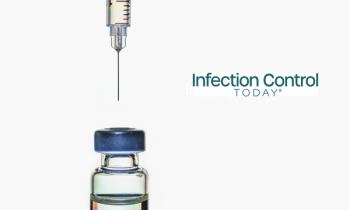
Triumph Over Superbugs Requires C Suite-Supported Multimodal Intervention Program
The only viable solution to confronting superbugs in U.S. hospitals is an enterprise-wide multimodal intervention program a program that is supported and heralded from the hospital C-suite down to the basement, including effective environmental hygiene, says George Clarke, CEO of UMF Corporation, a manufacturer and innovator of infection prevention products.
Clarke made his comments in an article, The Brave New World of Environmental Services, in the May issue of Executive Housekeeping Today magazine. The fact is its simply unrealistic to view hand hygiene programs as the best solution to reducing the number of HAIs, regardless of the pathogen, Clarke says. Furthermore, the superbugs were battling today are the deadly consequence of a lack of antibiotic stewardship over the past 20 years. What is the point of emphasizing antibiotic stewardship in the fight against CRE (carbapenem-resistant Enterobacteriaceae) an organism that is essentially resistant to all available antibiotics? This is not to discount hand hygiene and antibiotic stewardship outright, he says. But as single-initiative programs, they will never achieve the results caregivers, hospitalists, infection preventionists hope for and patients are entitled to.
According to Clarke, a multimodal approach for reducing and/or preventing healthcare-associated infections (HAIs) must include: a dedicated infection prevention team; risk assessment; active surveillance; isolation precautions; adequate personal protective equipment; environmental hygiene best practices supported by best-in-class products, education and training, combined with antibiotic stewardship and an effective hand-hygiene compliance program.
And it is within this multimodal scenario that it should become clear to even the casual observer, the members of every environmental services (ES) department compose the true first line of defense in providing a safe patient environment and reducing HAIs, he says.
In the article, Clarke cites research supporting the benefits of diligent environmental processing and hygiene in significantly reducing HAIs. In one report, Jewish Hospital-Mercy Health in Cincinnati cut the rate of Clostridium difficile (C. difficile) infection in half over six months. In another report published this month in Infection Control and Hospital Epidemiology, researchers found that a dedicated daily cleaning crew that adequately cleans and disinfects rooms contaminated by C. difficile using a standardized process can be more effective than other disinfection interventions.
In those hospitals where ES is being given a larger role in preventing infections, it is a brave new world one that is providing a safe patient environment, Clarke says.
Source: UMF Corporation
Â
Newsletter
Stay prepared and protected with Infection Control Today's newsletter, delivering essential updates, best practices, and expert insights for infection preventionists.




